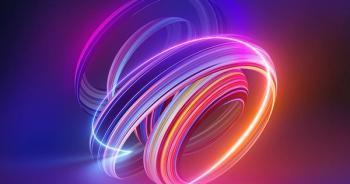
Can we predict neovascular complications?
Many ophthalmic disorders give rise to neovascularization of the iris and neovascular glaucoma. Almost all of these disorders are characterized by retinal hypoxia and retinal capillary nonperfusion, the same factors involved in the development of retinal neovascularization. One of the most common causes is central retinal vein occlusion (CRVO), which is a visually disabling disease that is second in prevalence only to diabetic retinopathy.
Neovascular glaucoma occurs in 30% of patients with CRVO, 58 to 86% of whom suffer with the ischaemic form of CRVO and 4% with nonischaemic CRVO. Of the nonischaemic cases, however, 54% later go on to develop ischaemic CRVO. In practice, neovascular glaucoma provides a big challenge, with current therapies having a relatively low success rate, prevention is the most desirable form of intervention.
With this in mind, Shahsuvaryan investigated the systemic and ocular risk factor indicators for neovascular complications attributable to CRVO, in the hope of assisting clinicians to prevent neovascular glaucoma from developing.
Signs of CRVO included flame-shaped, dot or punctate retinal haemorrhages in all four quadrants of the retina, dilation and increased tortuosity of the retinal veins and optic disk swelling.
Data collection included demographic characteristics, associated ophthalmic and systemic conditions, blood pressure, complete blood count, erythrocyte sedimentation rate (ESR), blood sugar, blood coagulability (fibrinogen, recalcification time, plasma tolerance to heparin, prothrombin ratio) and visual acuity. Twenty-eight factors determined from clinical records were used to select statistically significant risk factors for neovascular glaucoma, using Bayes' theorem. Factors presented in figure 1 outline those factors that were selected for forecasting of neovascularization development, while the distribution of preliminary selected factors in patients with and without neovascular glaucoma is shown in figure 2. Based on the information rate calculation for each analysed factor, the author was able to elucidate the most significant neovascular glaucoma predictors (Table 1).
Analysis of the results showed that those patients who had suffered with systemic hypertension for a period of more than 10 years and those with a blood pressure reading of more than 200 mmHg, were more likely to develop neovascular glaucoma. The predictive ability of this neovascular glaucoma forecasting method was 88%, with a sensitivity of 85% and a specificity of 91%.
How do we predict it?
The results indicate that neovascular glaucoma is more likely to occur after CRVO in subjects with one or more of the factors listed in table 1. A follow-up schedule should be established depending on the patient's circumstances and these patients should be closely monitored for the earliest signs of iris and angle neovascularization.
Newsletter
Get the essential updates shaping the future of pharma manufacturing and compliance—subscribe today to Pharmaceutical Technology and never miss a breakthrough.










































